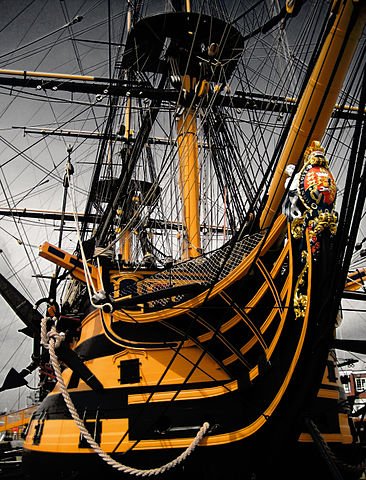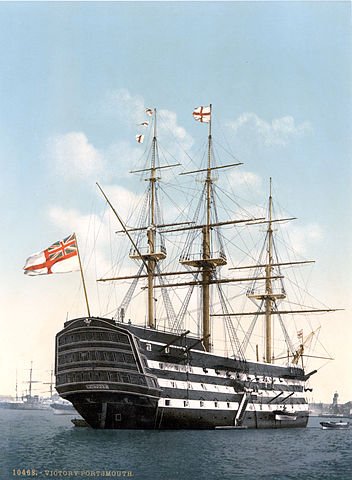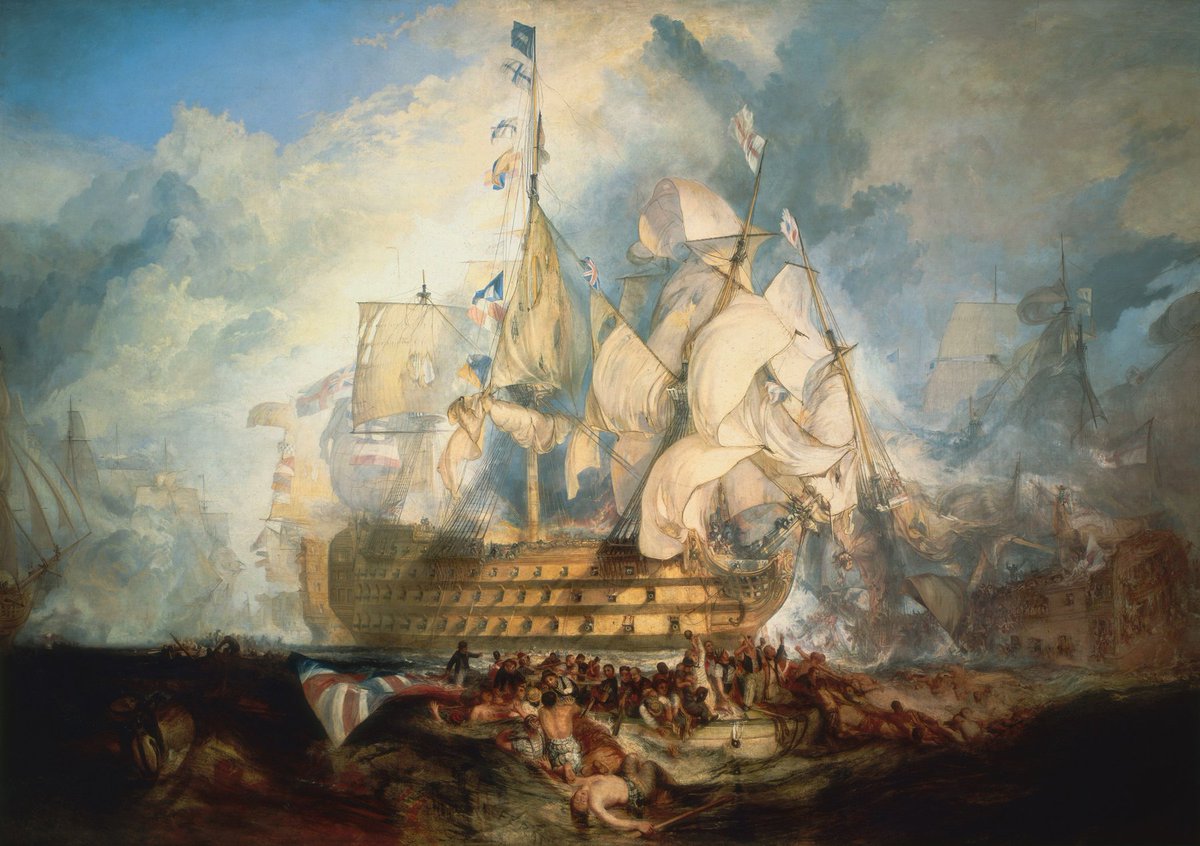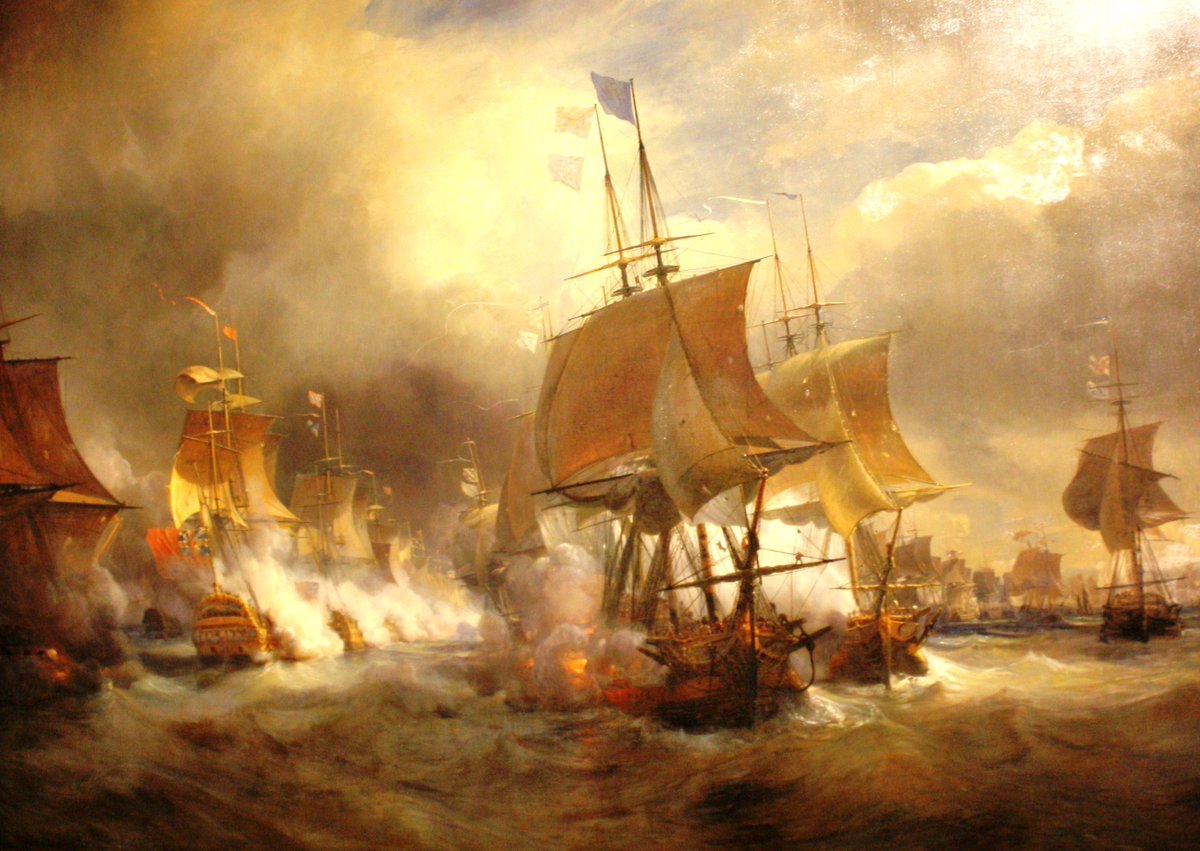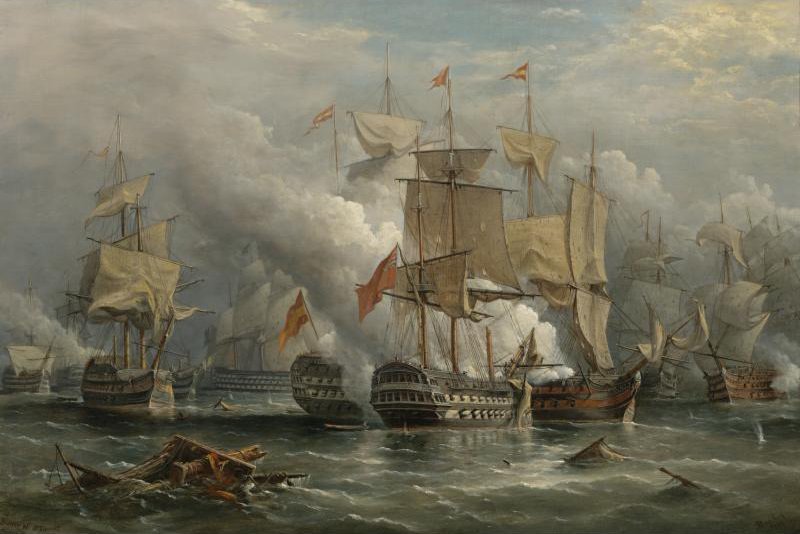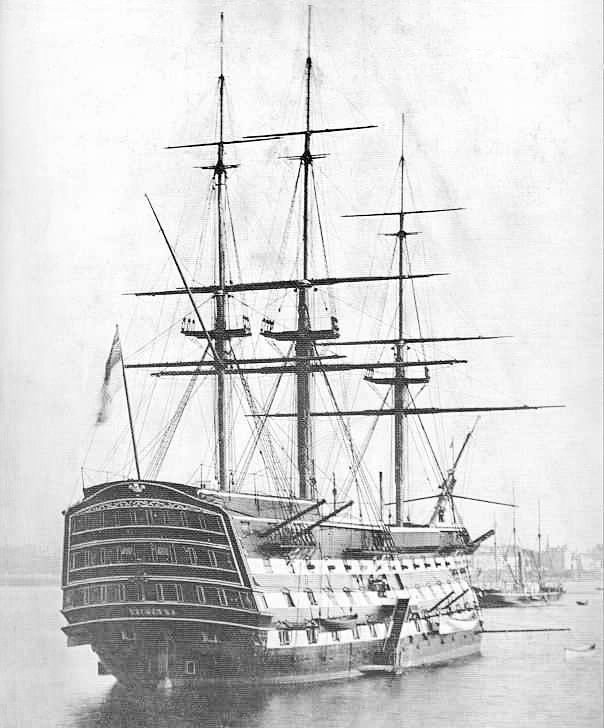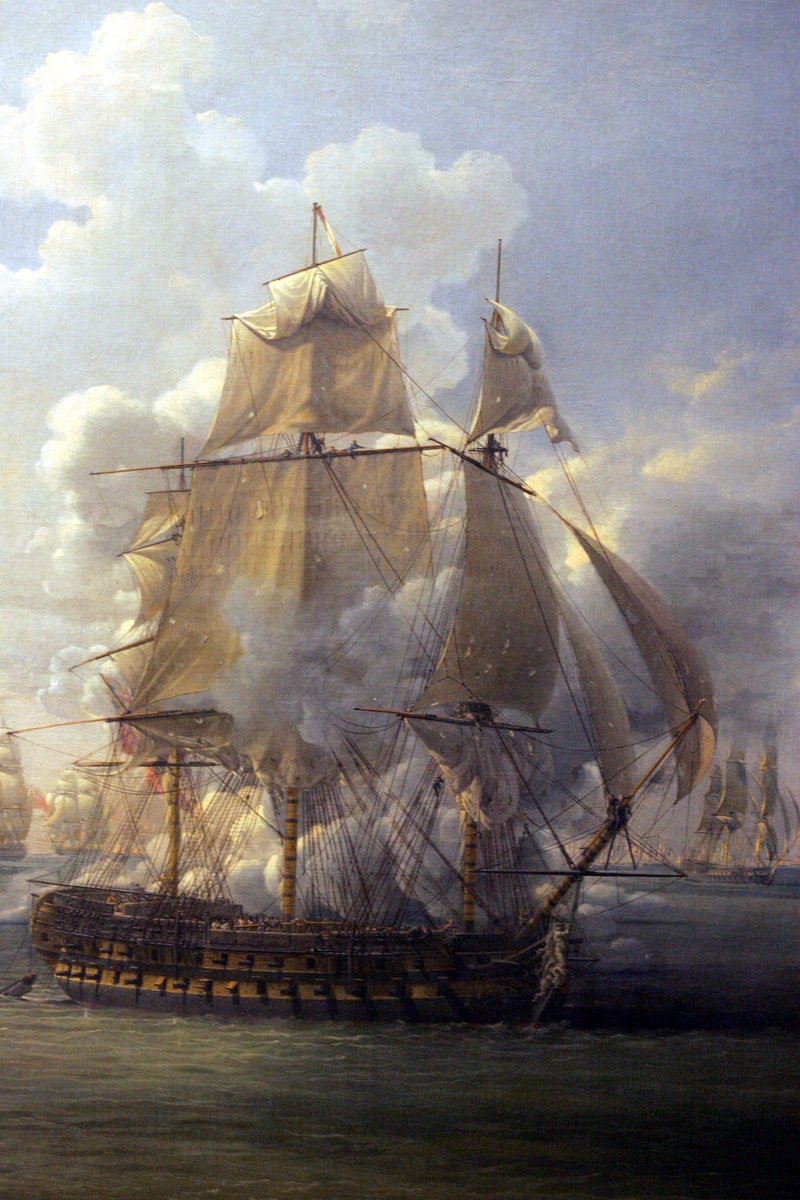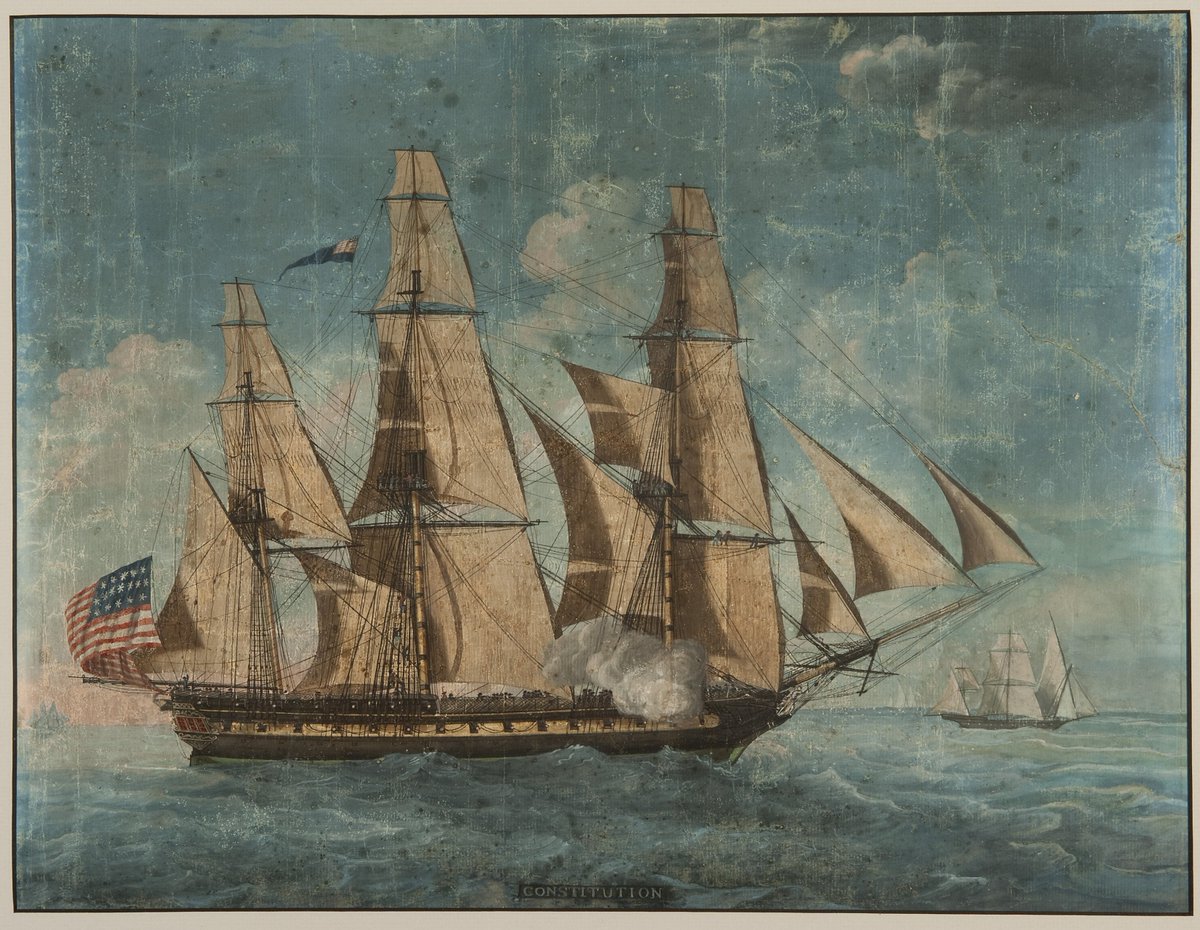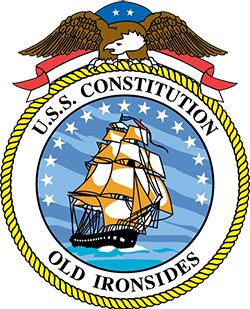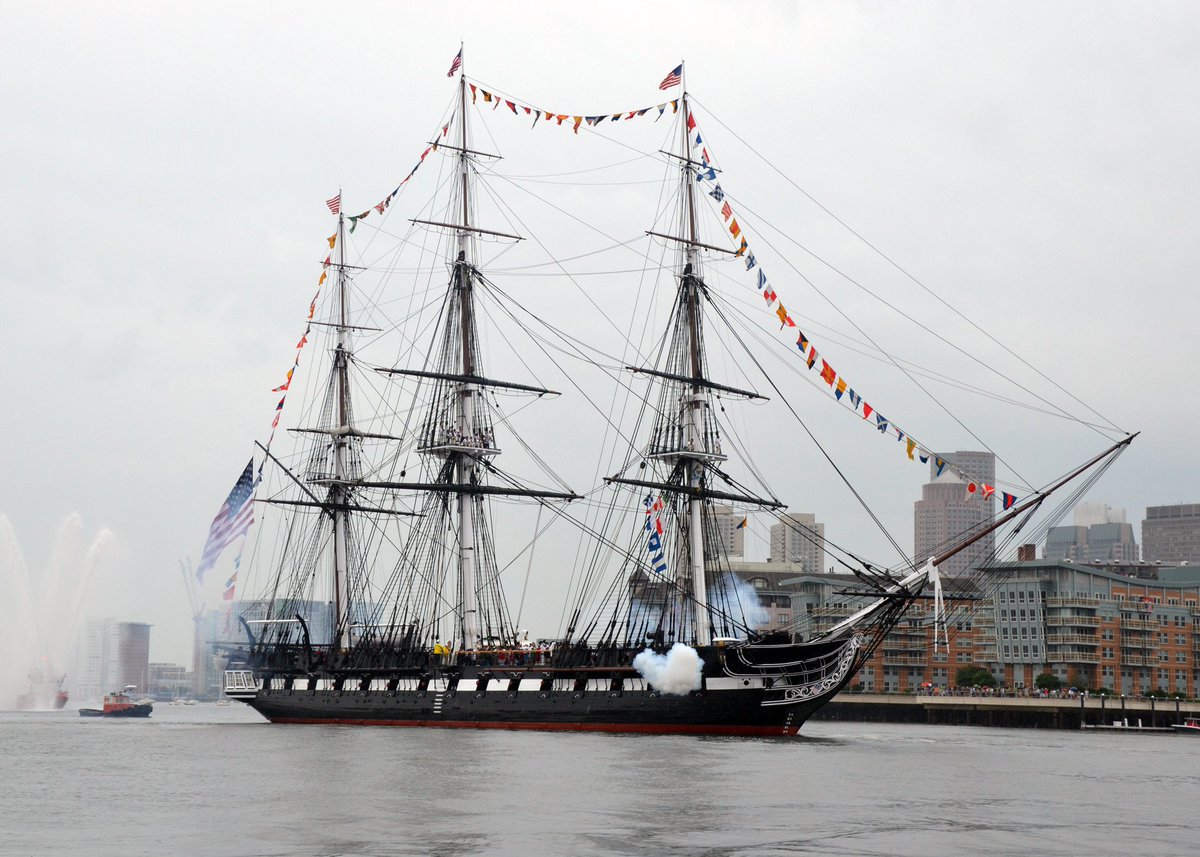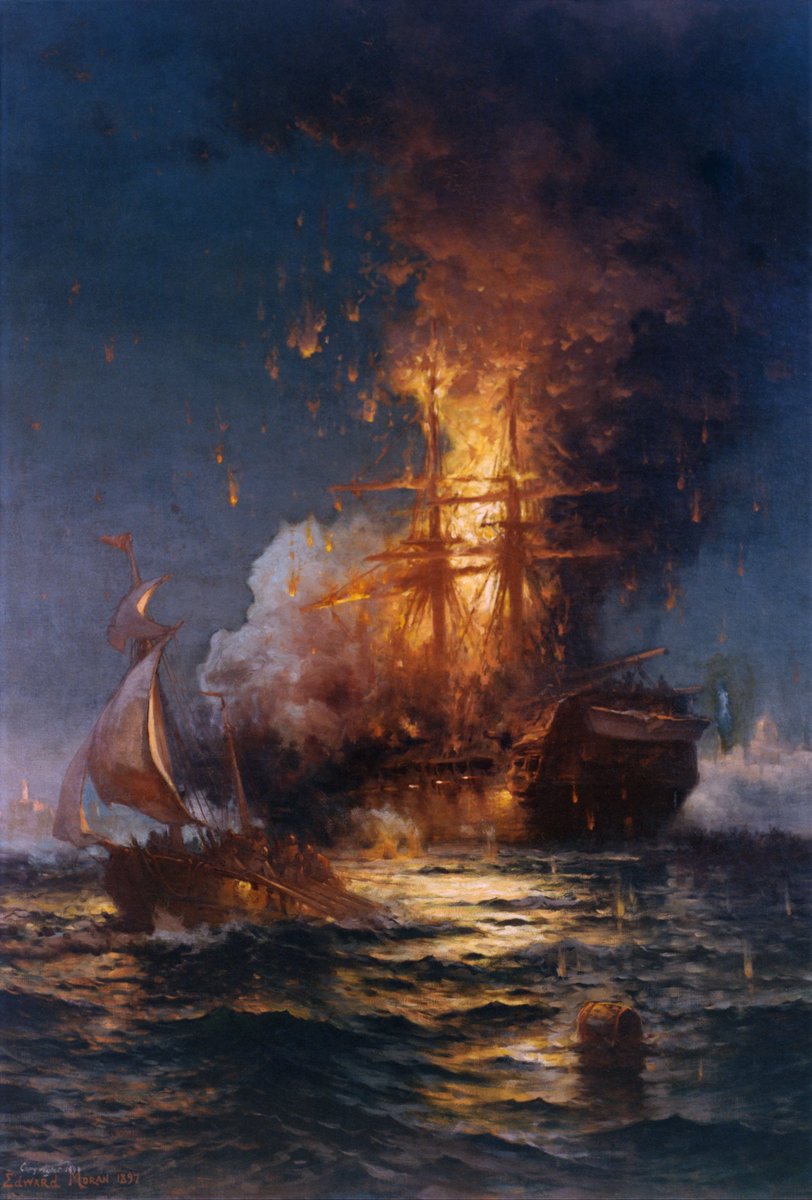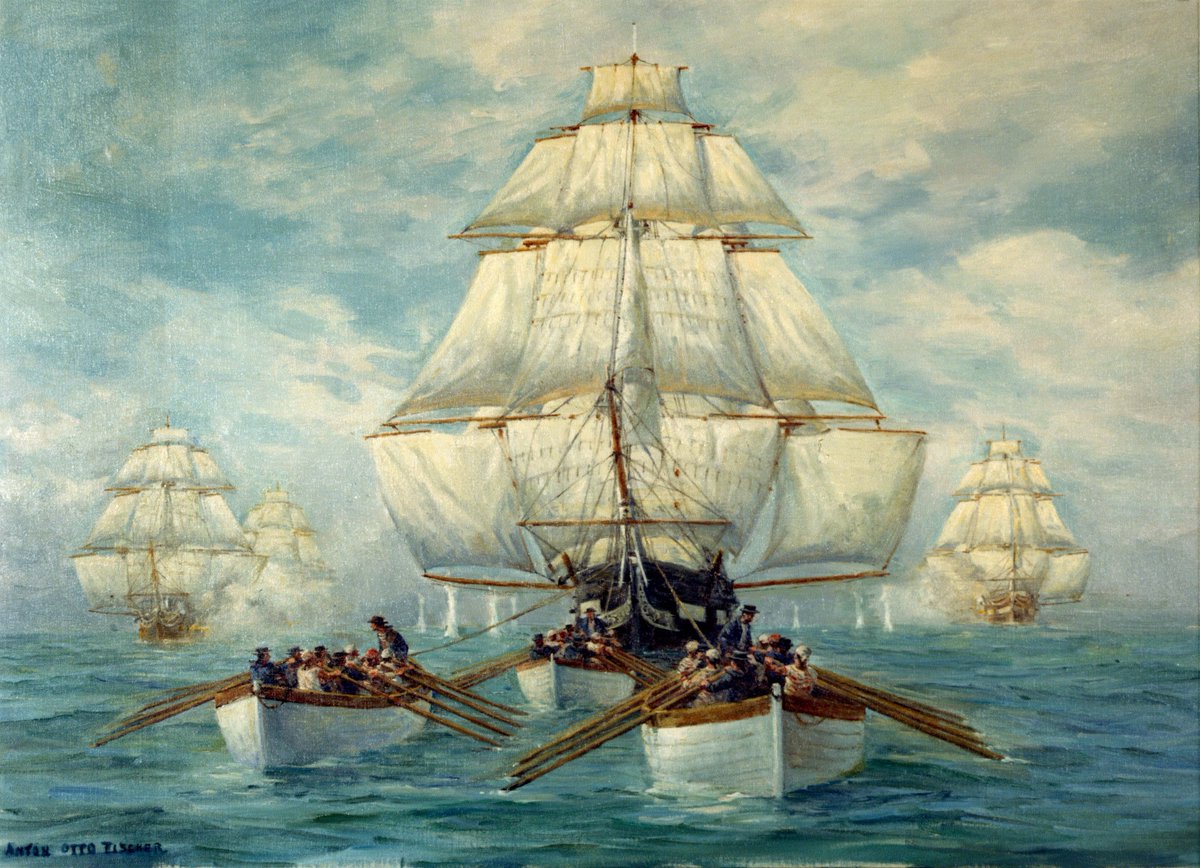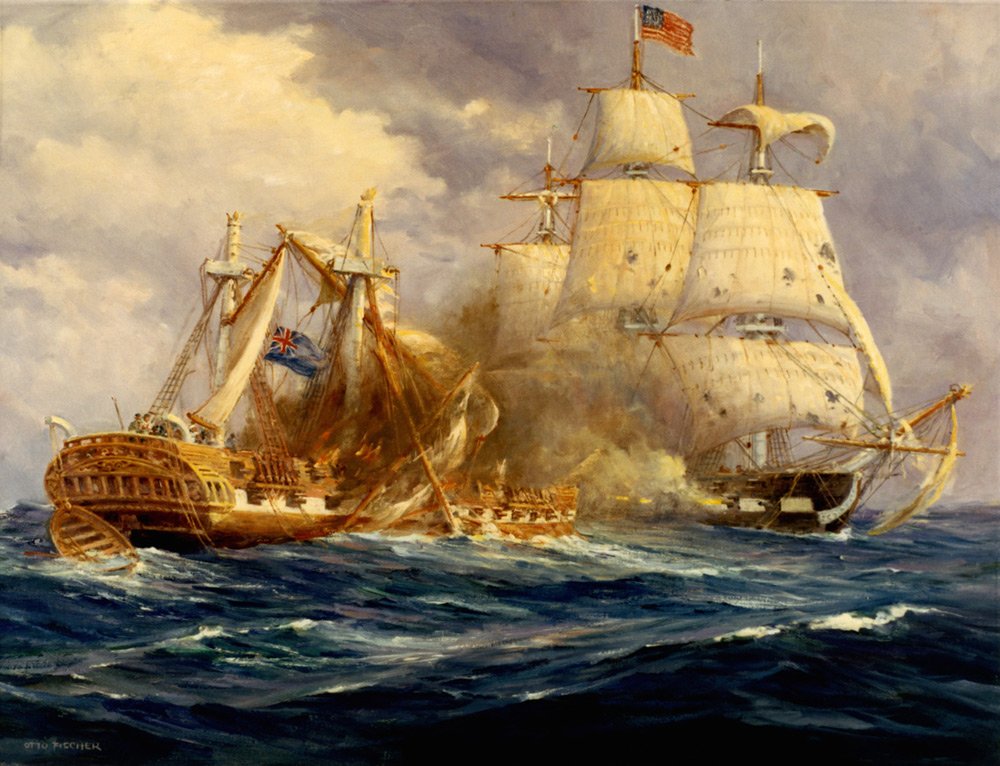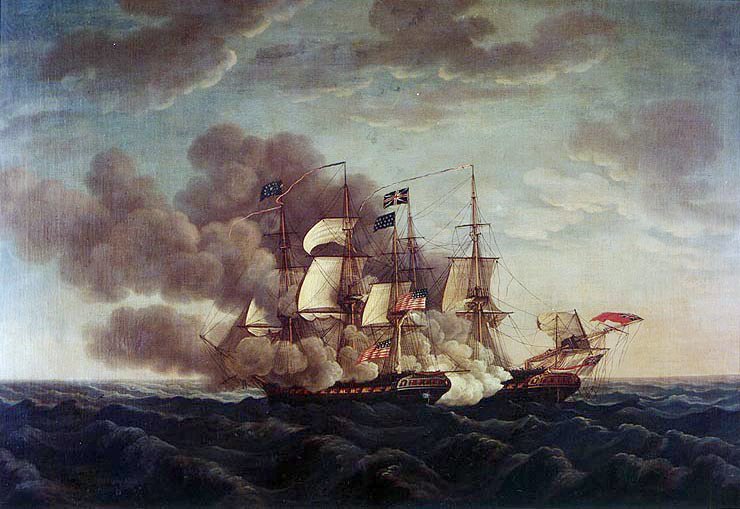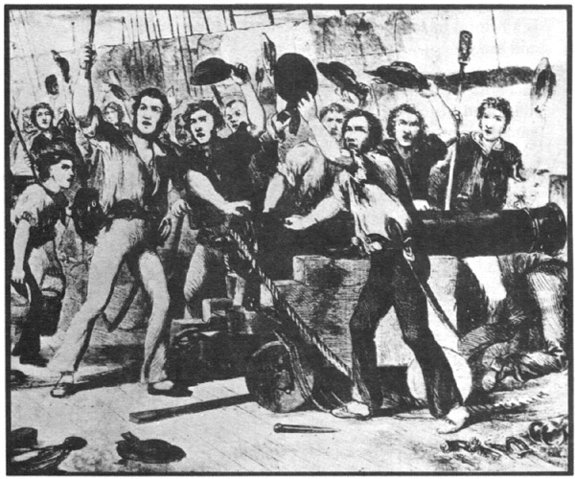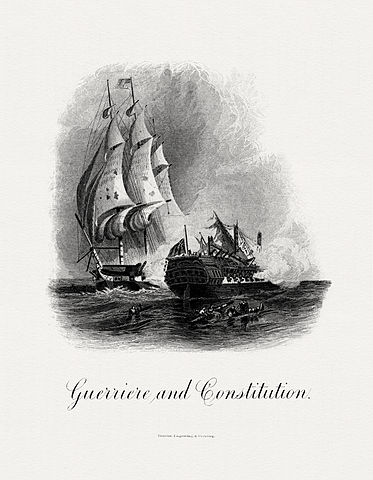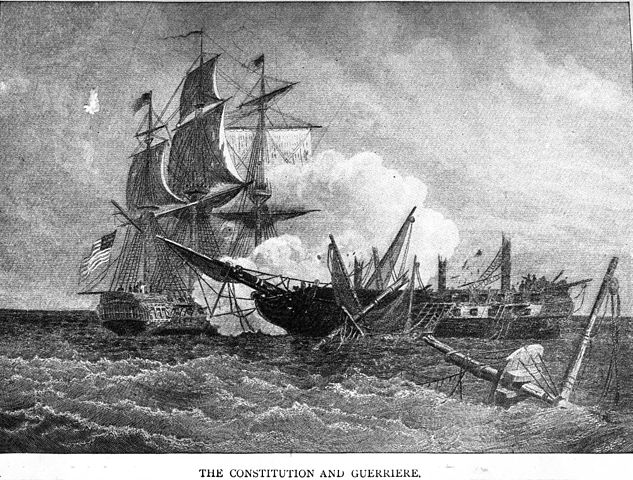1. Why we call spies "Ninth Rate" and how we are all helping to "Pay it Forward" by taking on the role of the Repeating Frigate <THREAD>
(Shown: French frigate Lutine 1799, captured and recommissioned HMS Lutine, lost in 1799)
(Shown: French frigate Lutine 1799, captured and recommissioned HMS Lutine, lost in 1799)
2. Step back to the Age of Sail during the American Revolutionary and Napoleonic wars. The "line of battle" ships, also called "battleship" or "ship of the line" were monsters.
(HMS Victory in 2007, oldest commissioned warship on the planet)
(HMS Victory in 2007, oldest commissioned warship on the planet)
3. What does it mean to be "first rate"? To understand the answer, let& #39;s look at the proud history of HMS Victory, now preserved as a museum ship. We& #39;ll focus specifically on "first rate". "Ninth rate" will come, but much later in our story.
(HMS Victory in Portsmouth, 1900)
(HMS Victory in Portsmouth, 1900)
4. "HMS Victory is a 104-gun first-rate ship of the line of the Royal Navy," launched 1765. But what does that even mean? She carried 32-pounders at the Battle of Trafalgar, but what does THAT even mean?
5. Let& #39;s start by explaining the great guns. The lower gun deck carries cast-iron cannon that shoots a 32-pound iron cannon ball.
h/t @benjaminwittes https://twitter.com/benjaminwittes/status/1031315280310530048">https://twitter.com/benjaminw...
h/t @benjaminwittes https://twitter.com/benjaminwittes/status/1031315280310530048">https://twitter.com/benjaminw...
6. It& #39;s just like the Baby Cannon Society only bigger. And fifteen of those three-ton monsters spewing 32-pound shot at once.
h/t @benjaminwittes https://twitter.com/benjaminwittes/status/1032019196232777733">https://twitter.com/benjaminw...
h/t @benjaminwittes https://twitter.com/benjaminwittes/status/1032019196232777733">https://twitter.com/benjaminw...
7. The middle gun deck carries twenty-eight 24-pounders. Each of those cast-iron guns weighs two and a half tons. So that means fourteen of those guns firing along with the fifteen 32-pounders. https://twitter.com/benjaminwittes/status/1031970506369589249">https://twitter.com/benjaminw...
8. Two be clear: Half of the great guns fire on one side of the ship (the right or starboard side), and half of them fire from the other side of the ship (the left or larboard side, later called the port side to avoid confusion in very-loud battle).
9. A line-of-battle ship normally only engaged the enemy on one side at a time, thus at most half of the great guns would be in action.
10. In that same battle, the upper gun deck mounted thirty 12-pounders; the quarter deck carried twelve 12-pounders.
11. The quarterdeck, the rear of the ship, could point the "small" two-ton cannon either to the side or to the stern (to shoot behind).
12. The forecastle, at the front of the ship, also mounted a pair of 12-pounders, in addition to a pair of "real smashers," a pair of 68-pounder carronades.
13. In those days it was about the firepower. Whoever could hit the hardest was the most dangerous. This was measured as "broadside weight of metal," meaning how much iron could be shot by all those cannon at once.
14. Ships were wooden. HMS Victory was a sailing ship mounting 6,500 square yards of sail. Wood is flammable. So are the canvas sails. Can you imagine how much gunpowder it takes to continuously feed 104 great guns?
15. To blow a ship out of the water literally happened. Direct weight of cannon fire could reduce a ship to kindling. But if a ship catches fire, when that fire reaches the powder magazine, all the nearby ships may be destroyed in the explosion.
18. The opposing fleets each formed a "line of battle." Each fleet literally formed into a line of ships. Those lines engaged each other, broadside for broadside. The carnage was unspeakably ugly.
19. Each ship in that line of battle was called a "line of battle ship" or "ship of the line." Thus a "battleship" or "ship of the line" was a ship with enough great guns (and men to shoot them) to hold its own in a fleet engagement.
20. During the Napoleonic Wars, a First Rate ship of the line carried 100+ guns, had three gun decks, 850-875 men. The Royal Navy had 5-7 such ships.
21. The Royal Navy had 8-9 Second Rate ships, 90-98 guns, 3 gun decks, 700-750 men. Third Rates were also deemed ships of the line, with two gun decks and 64-80 guns.
22. The fledgling U.S. Navy had zero ships of the line at that time. None. That& #39;s counting both the Revolutionary War and the War of 1812. Nothing. Nada. We& #39;ll come back to this queer fact.
23. The smaller "rated" ships were 4th, 5th, 6th rates. They were the frigates and smaller ships of war. They did NOT stand in the line of battle - ever. We& #39;ll talk about that soon as well.
24. Anything smaller/weaker than 6th rate was "unrated." They were still ships-of-war to be sure: Two-masted brigs, cutters, gun boats, and so on. They often served as escort vessels and harbor patrols. There was no such thing as 7th rate, 8th rate, or 9th rate.
25. Many, MANY commonly-used phrases come from the Royal Navy. Not enough room to swing a cat; by the board; both by and large; let the cat out of the bag; sheets to the wind; all come from the Navy. As is the case for 1st rate, 2nd rate, and so on.
26. So, to call someone "ninth rate" is definitely an insult. There is no rating that low. There isn& #39;t even a rating two ratings up from ninth rate, it& #39;s so low. So now you know, how low is low!
27. Yet our story is far from over. We& #39;re here to talk about paying it forward.
28. First, for those interested in the actual history, here& #39;s an article from Naval History Magazine (2008) posted on the U.S. Naval Institute site comparing U.S. Navy and Royal Navy of the time: https://www.usni.org/magazines/navalhistory/2008-08/british-view-naval-war-1812">https://www.usni.org/magazines...
29. Raise your hand if you& #39;ve ever heard (or sung) the oldest official song of the U.S. Armed Forces. It begins...
From the Halls of Montezuma
To the shores of Tripoli;
We fight our country& #39;s battles
In the air, on land, and sea;
From the Halls of Montezuma
To the shores of Tripoli;
We fight our country& #39;s battles
In the air, on land, and sea;
30. "To the shores of Tripoli" refers to the 1805 Battle of Derne, part of the First Barbary War. This was the occasion of Lt. O& #39;Bannon and his Marines hoisting the American flag over the "Old World" for the first time. So what was up with that?
31. The U.S. Navy, to put it politely, was a minor force. The U.S. built six frigates, beginning 1794, to fight against the Barbary Pirates of Algeria. The fourth-rate U.S. Navy brought the U.S. Marines. To the shores of Tripoli. The Marines took it from there.
32. During the War of 1812 (1812-early 1815), the British Royal Navy ruled the oceans. All of them. The U.S. Navy had not one single ship afloat able to join the line of battle. Ever. Yet we& #39;ve heard of the U.S.S. Constitution, Old Ironsides.
33. Why is she called Old Ironsides? She& #39;s a wooden ship. It& #39;s because she was so more heavily built (thicker oak planks) than her British adversaries. We& #39;ll get to that in a moment.
34. In the naval lines-of-battle during a fleet engagement (two navies slugging it out), frigates and smaller ships were in the area. We& #39;ll explain why in a bit. It& #39;s part of our story. But suffice it to say that the frigates were considered NON-combatants.
35. No line-of-battle ship would ever fire on a non-combatant ship such as a frigate during a fleet engagement. It just wasn& #39;t done. The great navies (meaning England and France) all honored this convention.
36. To be sure, if a frigate fired on a ship of the line, that removes the protection. She would be blown into literal smithereens with a single broadside. Frigates had thin hulls with zero protection for the great 24-pounders and 32-pounders.
37. Frigates could engage each other - and did. Squadrons of frigates could chase each other - and did. Basically 4th, 5th, and 6th rates were free to engage each other. To be sure it might not be WISE for a small ship to engage a larger frigate, but it was acceptable.
38. Let& #39;s look to the ship-to-ship battle between USS Constitution (44) and HMS Guerriere (38). Much has been made of this battle - and indeed this is where Constitution became Old Ironsides.
39. Take careful note of Constitution (44) carrying 44 great guns as compared to Guerriere (38) carrying 38 great guns. That sounds like it& #39;s almost an even match. It wasn& #39;t. By this point Constitution had been chased across the ocean various times.
40. Remember how the measure of firepower is broadside weight of metal? In fact USS Constitution carried 56 guns at the engagement, against HMS Guerriere& #39;s 44 guns. Naval firepower, back then, varied, unlike the fixed guns of modern naval warships.
41. More importantly, USS Constitution could fire a 754-pound broadside (combined weight of cannon balls all arriving at once), and did, whereas HMS Guerriere fired a 526-pound broadside. That sounds like one outmatched the other, but there& #39;s more.
42. Each of the great guns requires several men to work the gun. So then, the question becomes, did the USS Constitution carry enough men to man the guns?
43. USS Constitution carried 480 U.S. Navy Sailors and Marines. HMS Guerriere carried 272 Royal Navy Sailors and Royal Marine infantry. The U.S. forces, if I remember aright, were all volunteers, whereas the Royal Navy had pressed men (conscripts).
44. HMS Guerriere was badly outmatched, but did not KNOW it was so badly outmatched. This was just after the outbreak of war and thus far USS Constitution had done little more than run like a rabbit.
45. HMS Guerriere was destroyed and sinking. The news of victory was sorely needed by the fledgling USA, and the sailors were hailed as heroes.
46. So what& #39;s the point? It& #39;s this: Those 4th-rate frigates carried a LOT of firepower. They could - and did - smash each other into kindling. But none of them could stand in the line of battle. It just wasn& #39;t done. That brings us to the next point.
47. I& #39;ll draw from Wikipedia, that ultimate repository of naval lore: #Role">https://en.wikipedia.org/wiki/Frigate #Role">https://en.wikipedia.org/wiki/Frig...
48. "Frigates were involved in fleet battles, often as & #39;repeating frigates.& #39; In the smoke and confusion of battle, signals made by the fleet commander, whose flagship might be in the thick of the fighting, might be missed by other ships of the fleet."
49. Remember, this is the Age of Sail. Wind and wave were everything. Ships traveled more-or-less in the direction of the wind. Signal flags, flapping in the wind, ALSO blew in the direction of the wind.
50. If you& #39;re directly upwind, or directly downwind, of a flag, you can& #39;t see what& #39;s on the flag. You& #39;re looking at it edge-on. That& #39;s why the frigates stand outside of the line of battle, outside of the clouds of gunpowder smoke.
51. "Frigates were therefore stationed to windward or leeward of the main line of battle, and had to maintain a clear line of sight to the commander& #39;s flagship.
52. "Signals from the flagship were then repeated by the frigates, which themselves standing out of the line and clear from the smoke and disorder of battle, could be more easily seen by the other ships of the fleet.
53. "If damage or loss of masts prevented the flagship from making clear conventional signals, the repeating frigates could interpret them and hoist their own in the correct manner, passing on the commander& #39;s instructions clearly."
54. Remember, we had no radio, no engines. Orders were communicated by signal hoists - signal flags by day, colored lanterns and rocket-flares by night.
55. Do you recall the topics of this story? We& #39;ve explained why we call spies "Ninth Rate." Now let& #39;s explain how we are all helping to "Pay it Forward" by taking on the role of the Repeating Frigate.
56. Think of our citizen journalists as the line-of-battle ships I& #39;ve been describing. The 1st, 2nd, and 3rd rates. They& #39;re doing the digging, bringing out the facts and connections. They& #39;re consumed in the smoke and flame and noise. They& #39;re under continuous attack.
57. Now think of US as the Repeating Frigates around that line-of-battle. We& #39;re not in the fray, and likely won& #39;t be touched. But we can take that information our Citizen Journalists are producing, and pass it along. https://twitter.com/Hoi_Pollois/status/1033464735470112768">https://twitter.com/Hoi_Pollo...
58. We can amplify. We can patiently explain. This is literally mind numbing. People are actively aiming to screw with our brains. https://twitter.com/Dry_Observer/status/1033440290797965312">https://twitter.com/Dry_Obser...
59. We can firmly be all in this together. We can have each others& #39; backs - that includes the newest of us. We can think of "paying it forward" whenever possible. https://twitter.com/karolcummins/status/1033201433019994112">https://twitter.com/karolcumm...
60. Seriously, remember how interconnected and mind numbing this is for everyone. This by itself means people are hurting. Let alone the intentional misery that& #39;s part of this picture. Help. Pay it forward. VOTE.
/end
/end
61. Coda: Sue Stroud& #39;s nephew sails on the for-real replica frigate L& #39;Hermione. She& #39;s sharing a couple of 6-minute videos showing the building of the frigate. They show the extent and majesty of these beauties.
h/t @suestroud https://twitter.com/suestroud/status/1033559958107770882">https://twitter.com/suestroud...
h/t @suestroud https://twitter.com/suestroud/status/1033559958107770882">https://twitter.com/suestroud...
62. The replica was completed 2014. The Captain has been given the Legion d& #39;Honneur for getting it built.
h/t @suestroud https://twitter.com/suestroud/status/1033567153314619392">https://twitter.com/suestroud...
h/t @suestroud https://twitter.com/suestroud/status/1033567153314619392">https://twitter.com/suestroud...
63. They hope to begin circumnavigating the globe two years from now.
h/t @suestroud https://twitter.com/suestroud/status/1033567588553355264">https://twitter.com/suestroud...
h/t @suestroud https://twitter.com/suestroud/status/1033567588553355264">https://twitter.com/suestroud...
64. Here is the 6-minute video showing the building of the frigate L& #39;Hermione. The video leads you to the second video showing its completion. Watch these videos to complete the story!
/end coda
h/t @suestroud https://twitter.com/suestroud/status/1033568162040623104">https://twitter.com/suestroud...
/end coda
h/t @suestroud https://twitter.com/suestroud/status/1033568162040623104">https://twitter.com/suestroud...
65. @threadreaderapp unroll and thank you.

 Read on Twitter
Read on Twitter
